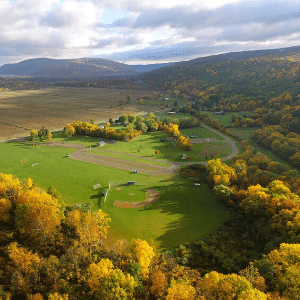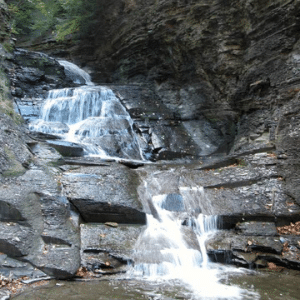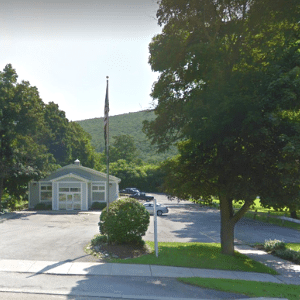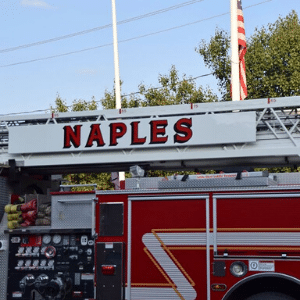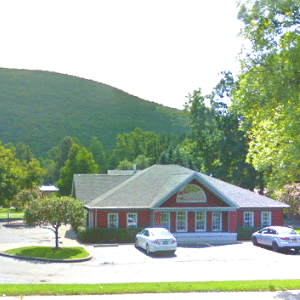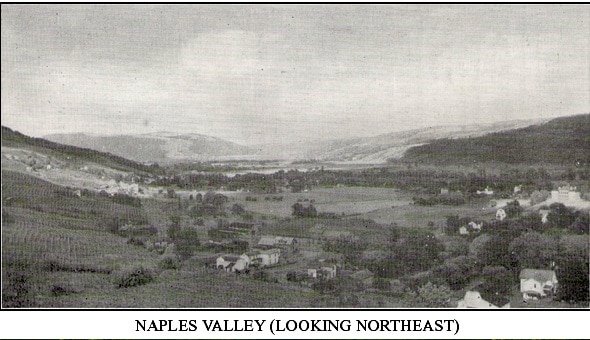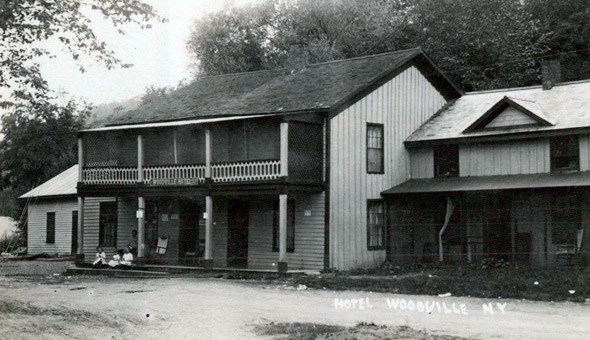wELCOME TO
Naples NY
Welcome to Naples, NY
Naples was founded in 1789 on the site of the old Seneca Village of Nundawao; first known as Watkinstown; in 1796 called Middletown; on April 6, 1808 renames Naples.
Town Population
Village Population
Established
Purchase of Township
On April 23, 1788, Nathaniel Gorham and Oliver Phelps secured from Hon. John Hancock, Governor of Massachusetts, the right to purchase lands west of the Hudson River in the State of New York. On July 8, 1788, a large part of Western New York was deeded to Phelps and Gorham by the Indians.
Sixty settlers at Partridgefield and Windsor formed a compact and selected a committee to buy a township. This committee sent Edward Kibbe, William Cady and Nathan Watkins to select the purchase.
Township No. 7 consisting of 21,120 acres was bought for about twelve cents on an acre. The Indians had hunting and fishing privileges for twenty years.
Earliest Settlers
The first of the settlers to arrive in Naples were Samuel Parrish with their families who came in February, 1789. About two months later John Johnson, Nathan Watkins, William Watkins, Jonathan Lee, William Clark, Ephraim Cleveland, Robert Wiley and others, with some of their families, arrived. Late in 1789 or in 1790 Alanson Lyon, Simeon Lyon, Jr., and Joshua Lyon came to the town.
The town was first called Watkinstown. In 1795 the name was changed to Middletown, and in 1808 it became Naples.
Early Churches
The first square log house, when not occupied by families, was used for church services. In June, 1972, the Reverend Zadok Hunn delivered a sermon here. The first hymn sung began with “Ye Tribes of Adam Join.” The singing was led by Col. Clark, assisted by Isaac and Stephen Watkins and the daughters of Mr. Clark.
About 1799, the Rev. Judediah Bushnell was sent by the missionary society to Connecticut to preach in Western New York. Rev. Bushnell preached here with great success.
On February 1, 1880, a church was organized by the name of “The First Religious Society Compact of Middletown.” It is supposed that the name was selected in deference to the groups of Presbyterians and Congregationalists. In 1815 this society joined the Geneva Presbytery and all were required to adopt the Westminster Confession of Faith and Catechism. Hence this group was known as Presbyterians.
The old church on the square was constructed after the Erie Canal wa sbuilt and was abandoned in 1850 when the brick one uptown was built.
In 1826 the Methodist Episcopal Church was organized and in 1843 the Baptist Church was formed. In 1842 the Christian Church was organized and a church was built in 1845. This church was disbanded about 1881. Later a Lutheran organization was formed and functioned for a few years. The Roman Catholic church was dedicated on May 19, 1879, by the Rt. Rev. Bernard J. McCabe, D.D.
A tabernacle was dedicated in 1936.
Early Schools
Miss Susanna Parish, who came with the first group of settlers, opened the first school in a log house two years after her arrival here. In 1792 or 1793 Miss Olive Cleveland taught a school in her father’s barn.
The year 1797 marks the building of the first schoolhouse. This was a two-room structure used also for church and for town meetings. The teacher, Isaac Blanchard, received twelve dollars a month.
The town was divided into two districts in 1812, with a school building in each district.
Many “select schools” flourished in private homes, between 1820 and 1860.
In 1859 a charter was granted by the state for an academy. Nearly one hundred citizens contributed from $25 to $2500 and the Naples Academy was erected on land given by James L. Monier. It was completed free of debt at a cost of $12,750.
The citizens of Naples have evidence their interest in educational privileges by the remodeled building in 1914 and the new central school building not yet completed.
Early Industries
In the fall of 1789, the settlers, aided by the Indians, constructed a hominy block.
A large oak stump was hollowed out and a large pestle made which was attached to a strong elastic pole with one end on the ground and resting over the end of an upright post for a fulerum. Here the whites ground their corn in the forenoon and the Indians in the afternoon.
In 1792 Reuben Parrish built the first sawmill.
In 1792 Nathan Watkins built a log house and covered it with hickory bark. This was the only tavern for several years.
In March, 1793, Benjamin Clark and Jabez Metcalf completed a race from Grindstone Creek to the site of the Naples Mill and opened one of the first sawmills in the Genesee Country.
In 1795 Benjamin Clark built the first grist mill. Up to 1795 the settlers had to go first to Elmira and later to Wilder’s mill at Seneca Point for grists.
In 1797, Mr. Heselgesser, a Hollander, opened a small general store on the flats. Other early stores were kept by Warren Clark, Mr. Selby, Cavin H. Luther, Hale and Monier, and Paul B. Torrey.
In 1818 or 1819 Simeon Lyon built a tavern just north of what is now the Naples Hotel. Later he applied for and obtained the postoffice for Naples.
Maxfield’s wine cellars were established in 1882 by D.H. Maxfield, and are now conducted by his son, Hiram Maxfield. Widmer’s wine cellars were established in 1888 by Jacob Widmer, and are now conducted by his sons, Carl C., Frank and William Widmer. They have grown to be large industries and Naples is called the wine center of the East.
In 1833 the first newspaper here was established by Charles Waterman, “The Naples Free Press.” Other newspapers published here have been: 1840-42, “The Neapolitan,” by David Fairchild; 1842, “The Family Visitor,” by Porter Phillips; 1853, “The Naples Journal,” by R. Denton; 1860, “The Weekly Express,” by M. Jory; 1875, “The Daily Record,” by S.L. Deyo; 1883, “The Union School Journal,” by Griswold & Pollock. In January, 1870, “The Naples Record” was started by Simeon Lyon Deyo, who sold it to Robert M. McJannett. In 1880 Mr. Deyo started “The Neapolitan,” which he merged with The Record in 1884, as “The Neapolitan Record.” In 1887 Mr. Deyo sold the business to John S. Tellier who restored the old name, “The Naples Record,” and was its publisher from October 1, 1887, until his death on March 27, 1937. It is now published by his son, Howard W. Tellier. In December, 1897, John G. Campbell started “The Naples News”; the following year George T. Morey purchased a half interest, and in 1900 Mr. Campbell retired from the firm. Since the death of Mr. Morey on May 27, 1931, it has been continued by his widow, Estelle Smith Morey, and their son, Edgar S. Morey.
Grape growing, wine making, basket making and the raising of small fruits were among the later industries in the town.
A knife factory was operated in Grimes Glen.
Interesting Facts About Colonial Naples
Among the company of sixty who bought the township of Naples were three colonels, one major and five captains in the Continental Army.
The first town meeting was held in 1796 at the home of Nathan Watkins, and the first town supervisor was William Clark.
The first frame building was a barn built by Nathan Watkins. The first frame dwelling was built in 1794 by Isaac Whitney.
The first highway was built in 1794 from Middlesex to Augusta (Naples to Middlesex). In the same year a road was built to the lake.
The first marriage was that of Benjamin Clark and Thankful Watkins.
In 1795 the Duke of Liancourt, afterward Louis Philippe, citizen King of France, with Captain Williamson, staid one night at the house of Jabez Metcalf, on their way from Bath to Geneva.
In the fall of 1796 a large panther was shot by Benjamin Clark in Tannery Gully. Bounties were paid for several years on panthers, wolves, wildcats, rattlesnakes, hawks, owls, blackbirds, woodpeckers, and squirrels.
In 1794 Canesque, the Indian chief who had moved with his tribe to Squawkee Hill, near Mount Morris, was, at his request, brought back to his beloved Kiandaga (meaning “Between the Hills”) where the whites cared for him until his death and buried him in their cemetery.
The first doctor was Dr. Thompson Maxwell who came to Naples about 1793.
The first college student from Naples was Stephen W. Clark who later was the author of Clark’s Grammer.
The person drawing the most books from the first circulating library was Stephen Story.
Myron H. Clark, a native of Naples, was Governor of the State of New York in 1855-1856.
Naples sent about fifty men to the War of 1812, more than two hundred to the Civil War, and more than one hundred to the World War.
The oldest fossil tree known in the world was discovered in 1882 in Grimes Glen by D. Dana Luther. This was mounted by Mr. Luther, and is a valuable exhibit in the State Museum in Albany.
A railroad was completed in 1892, connecting Naples and Stanley. Later it was extended to Geneva.
The Balm of Gilead, or “Riding Whip Tree,” stands on Thomas G. Briggs’ farm, formerly the Pottle farm. It grew from a riding whip stuck in the ground by Mary Kibbe on her arrival here in 1790.
Three of the most beautiful glens in Western New York are to be found in Naples Valley.
On the one hundredth anniversary of the settling of Naples a big celebration and parade, depicting events of the century, were given, Hon. Emory B. Pottle, grandson of Edward Kibbe, delivered a speech which became famous in Naples’ history.
Sources & Photos
- History of Naples, by Jane Mills.
- Annals of Naples, by Seymour H. Sutton.
- Naples Schools, by D. Dan Luther.
- Address of Hon. Emory B. Pottle, at the Centennial
- Celebration of Naples.Old Fulton History



